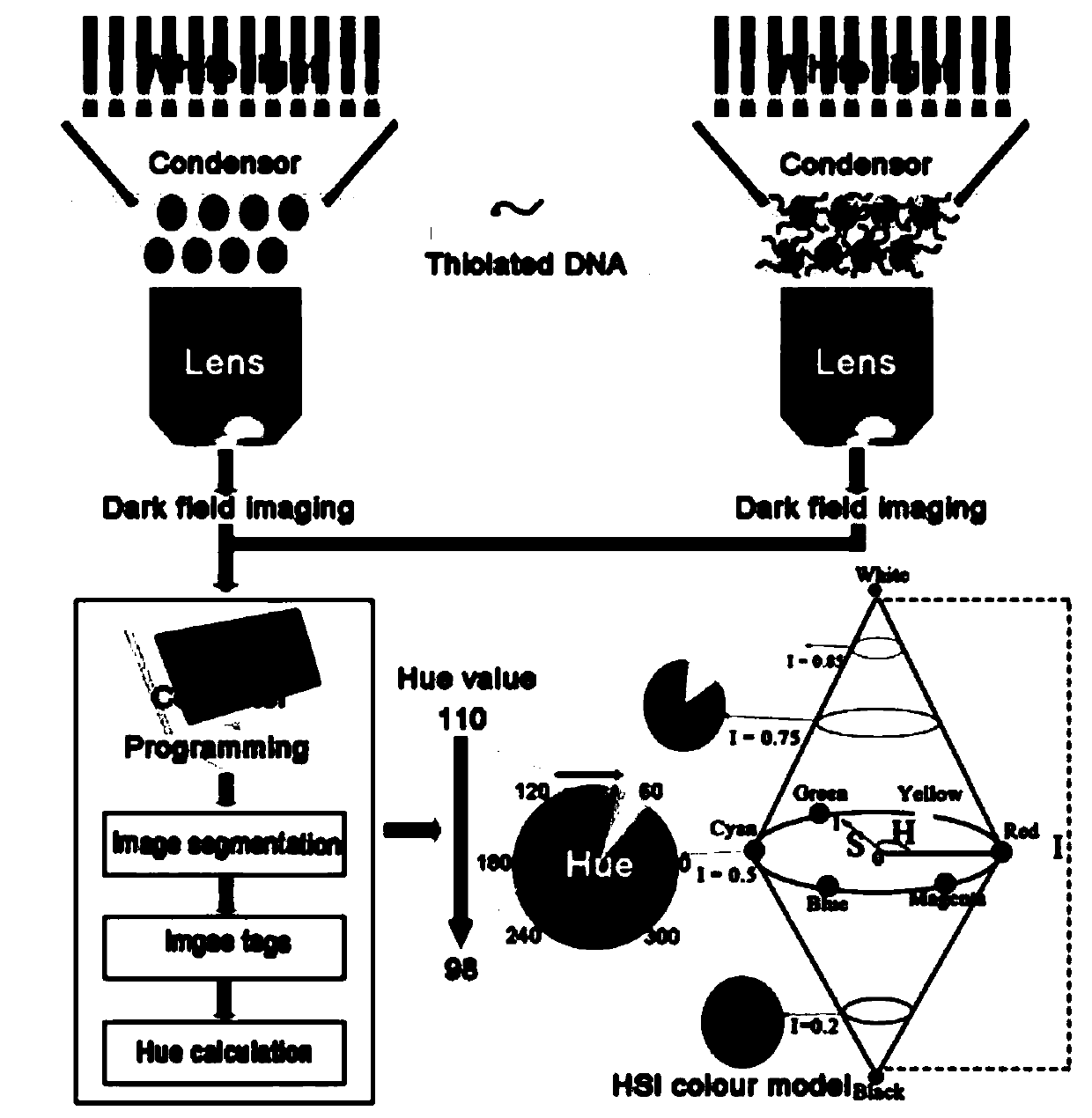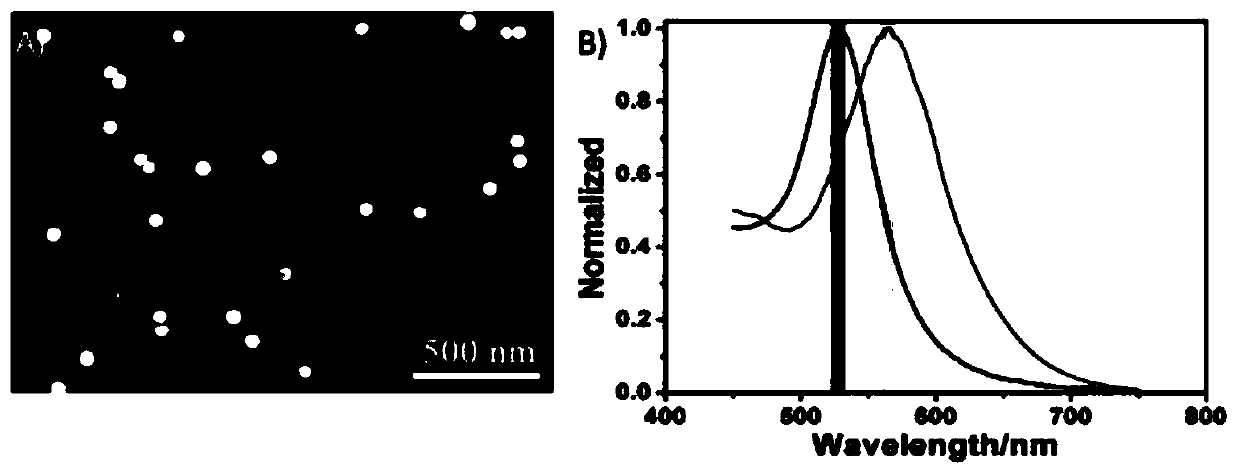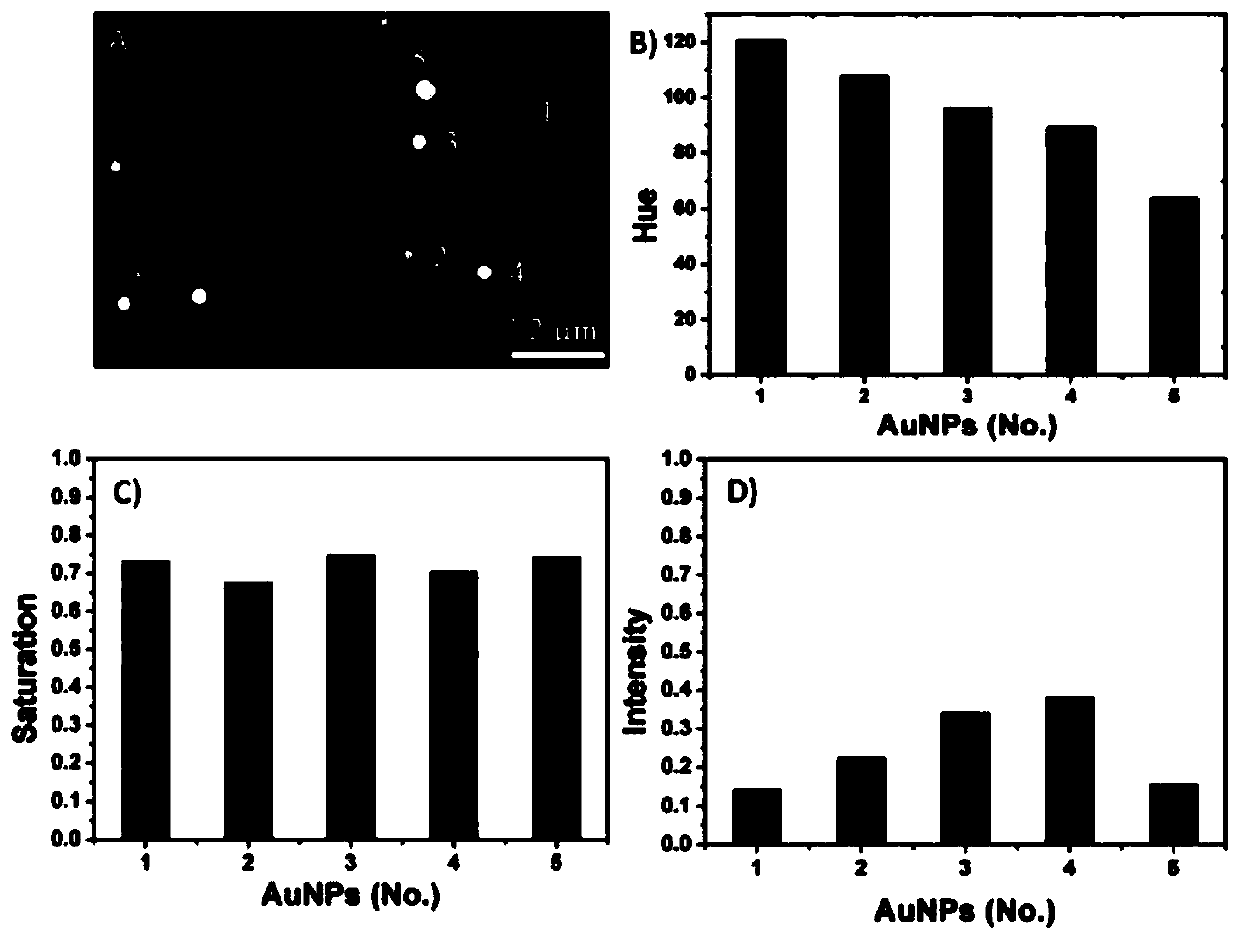Plasma nanoparticle dark field microimaging analysis method based on HSI color coding
A nanoparticle, color-coded technology, applied in the field of quantitative chemistry and biochemical imaging, can solve problems such as time-consuming and error, achieve the effect of improving accuracy, eliminating human error, and realizing automatic analysis
- Summary
- Abstract
- Description
- Claims
- Application Information
AI Technical Summary
Benefits of technology
Problems solved by technology
Method used
Image
Examples
Embodiment 1
[0028] The invention provides a plasma nanoparticle dark-field microscopic imaging analysis method based on HSI color coding, and the specific analysis steps are as follows:
[0029] S1. Establish an HSI color model to form the basis for HSI analysis. The HSI color model requires that each color can be represented by three components: hue (H), saturation (S) and intensity (I);
[0030] The H component describes the color itself at an angle between [0, 360] degrees; 0 degrees represents red, 60 degrees represents yellow, 120 degrees represents green, 240 degrees represents blue, and 300 degrees represents magenta;
[0031] The S component represents the white pollution level, and its range is [0, 1];
[0032] The I component represents brightness information, and the range between [0,1] and 0 represents black, and 1 represents white;
[0033] The steps to build the model are as follows:
[0034] S1.1, use the DFM imaging system to measure the scattered light IDFMS of plasmonic n
Embodiment 2
[0041] Take the combination of sulfurized DNA and gold nanoparticles (AuNP) as an example to form the basis of HSI analysis:
[0042] 1) The scattered light IDFMS of AuNP before and after sulfurized DNA attachment was measured by DFM imaging system;
[0043]2) Through computer programming, the color spots in the obtained scattered light IDFMS are automatically converted into digital hue values in the HSI color model; the algorithm of this program includes image segmentation, image labeling and hue calculation of each particle in the pixel; figure 1 It shows the change of the hue value of the scattered light color after the sulfurized DNA is attached to the surface of a single AuNP. After the sulfurized DNA is attached to the AuNP, the scattered light color of the single AuNP changes, and the corresponding hue value decreases;
[0044] 3) By encoding the scattered light color of the PNP with the HSI color system, the basis of the HSI analysis is formed;
[0045] Such as figur
Embodiment 3
[0051] To study the change of the color of light scattered by a single AuNP, to directly verify the possibility of using the HSI model to analyze the color of light scattered by a single AuNP, and to establish the relationship between the hue value of the standard spectral color and the shift of the scattering spectrum:
[0052] 1) Since the color change of the light scattered by a single AuNP is very sensitive to the surrounding medium, water, ethanol, 1-butanol, ethylene glycol (eg) and Soak AuNP in dimethyl sulfoxide (dmso);
[0053] 2) Through the above-mentioned computer programming, the hue value of the scattered light color of each AuNP in the DFM image can be automatically calculated.
[0054] The soaked AuNPs have different scattered light colors, gradually changing from green to yellow-green or yellow, where the red-shift of the scattered light occurs with the increase of Ri of the solvent, Figure 4 B is the obtained linear relationship between the hue value of indivi
PUM
| Property | Measurement | Unit |
|---|---|---|
| Average size | aaaaa | aaaaa |
Abstract
Description
Claims
Application Information
 Login to view more
Login to view more - R&D Engineer
- R&D Manager
- IP Professional
- Industry Leading Data Capabilities
- Powerful AI technology
- Patent DNA Extraction
Browse by: Latest US Patents, China's latest patents, Technical Efficacy Thesaurus, Application Domain, Technology Topic.
© 2024 PatSnap. All rights reserved.Legal|Privacy policy|Modern Slavery Act Transparency Statement|Sitemap



